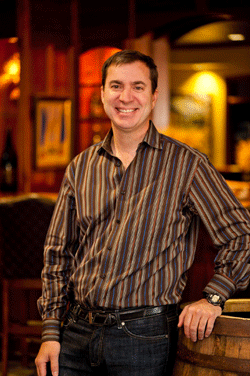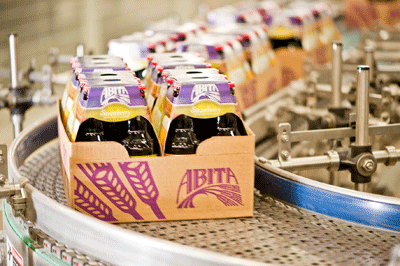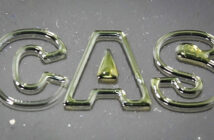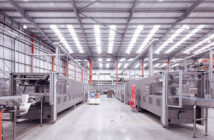Craft beer in cans? Yes, it really does work. Abita Brewery is one of the USA’s first craft breweries to serve the market with this packaging variant, produced on a completely new filling line able to handle both glass bottles and cans.
Not only has this privately owned brewery thus paved the way into a highly propitious future for its hand-crafted beers, it has also upped its filling capacities many times over, significantly enhanced the level of its filling quality, but above all has upgraded its flexibility quite enormously. The Varioline packaging system, in particular, opens up for what is the biggest and oldest craft brewery in the USA’s southeast undreamed-of options for the all-important situationally responsive marketing of its beers. Prospects for Abita are very auspicious, as they are indeed throughout the entire US craft beer industry.
David Blossman was 17 years old when the Abita Brewing Company was founded back in 1986. He was an enthusiastic fan of home brewing even when he was a youngster. “I just loved the idea of brewing beer yourself, if at all possible in your home town environment.” So he invested all his in Abita, thus acquiring a one percent stake. Mr Blossman was the second-youngest of six brothers, the rest of whom were already going out to work. He persuaded them with his enthusiasm, and one year later the six of them acquired a majority holding in the Abita Brewery. However, it was to take another ten years before he became the managing director. In the meantime, he had passed his CPA (certified public accountant) examination and spent several years working as a financial manager.
1996 to 2002 were difficult years for the USA’s entire craft brewing scene, and Abita did not escape unscathed. In 1996, the brewery was already selling 36,000 hectolitres with four types of beer and five seasonal beers. 1989 saw the start of bottling and of putting distribution, which had previously been handled in-house, in the hands of outside professionals. It was now up to David Blossman to cut costs and improve quality levels, both in the brewing and the bottling processes.
The brewhouse, being too small as it was, was in operation six days a week round the clock. Every brewer had his own personal style, the beers weren’t reproducible and their quality was inconsistent. In 2000, Mr Blossman installed Steinecker’s first Merlin brewhouse outside Europe, where to this day all 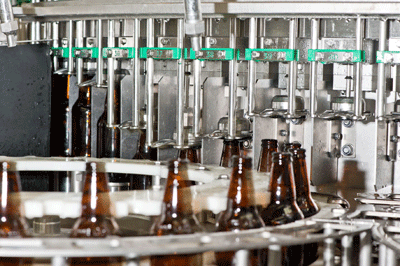
He also introduced new beers – a lite version, a number of special beers, and the ‘Select’ series of draught beer. In 2011, Abita sold 146,000 hectolitres of beer and 10,000 hectolitres of root beer. The six Blossman brothers still own a majority holding of 70 percent in this successful brewery to this very day. At present, Abita is ranked 25th among all of the USA’s commercial breweries, and is this nation’s 17th-largest craft brewery, with its products sold in 44 states. In order to preserve its beers’ freshness and quality, the brewery distributes them with a fleet of refrigerated trucks.
The privately managed brewery, backed up by loyal investors, is the biggest and one of the oldest craft breweries in the south-east of the USA – in Louisiana, Mississippi, Arkansas, Alabama, Tennessee, Florida, Georgia and South Carolina.
When it comes to the actual brewing, Abita relies on technology from Steinecker. In 2000, the brewery was the first outside Europe to use the radically new Merlin wort boiling system, which reduces the boiling time from 90 to 35 minutes, thus downsizing energy consumption by 70 percent. In addition, a vapour condenser recovers process steam into the bargain. The four vessel brewhouse, designed for a brew size of 120 hectolitres, makes for an annual capacity of 150,000 hectolitres, given a brew duration of 4.5 hours. By shortening this first to 3.5 and then to a mere three hours, thanks to an additional heat exchanger and a product holding tank, plus faster removal of the spent grains, Abita is now able to run no fewer than eight brews a day.
To ensure that its beers are properly fine-tuned in terms of both aroma and taste, Abita is keen to add hops three times over: bittering, flavouring and aroma hops. Some of the beers are additionally dry-hopped in the storage tank, like Jockamo I.P.A. and Restoration Ale, for example. Prior to filling, the beers are cold-filtered, first undergoing separation in a centrifuge and then final filtration in a sheet filter. Stabilisation is dispensed with.
As demand kept on growing and growing, it was high time to think about installing a new bottling line. The existing one of Italian manufacture, dating back to 1999 and rated at 9,000 bottles an hour, had long since reached the limits of its capacity.
“The more we asked of it, the lower its efficiency became”, Mr Blossman says.
“We wanted the new line to give us more capacity, and enhanced levels of both efficiency and bottling quality, plus way more flexibility."
Fill level accuracy was no longer adequate, pasteurisation was not reliable enough, labelling and end-of-the-line packaging left a lot to be desired, with efficiency levels falling towards 80 percent. The new Krones line, which started operation in November 2011, enabled David to translate his ideas into hands-on bottling reality: the line’s speed, at 24,000 bottles an hour, is more than double that of the old line, the efficiency targeted is over 90 percent, the oxygen content in the glass bottles is a minuscule 0.1 milligrams a litre (or even less), and fill level accuracy is spot-on, thanks 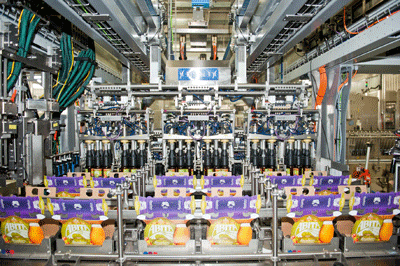
Abita achieves the high levels of flexibility it had been aiming for in two different ways: firstly through a parallel layout configuration for the bottle and can fillers, and secondly through the Varioline packaging system. For filling its bottles, the brewery had a modularised Modulfill HRS (VPKV) installed, monobloc-synchronised with a Variojet rinser.
“I was really taken with the Modulfill’s no-front-table concept, which is much, much more hygienic. And anyway, I’d prefer servomotors to gearwheels any time. They make for faster change-overs, which in turn boosts flexibility. The same applies to the Solomodule labeller – fewer mechanical parts, more electronics mean more flexibility.”
Alternatively to bottling, Abita, with its Volumetic VOC can filler, for the first time has an option for canning its beers, likewise at a speed of 24,000 330-millilitre cans an hour.
“We didn’t want to be the first craft brewery to fill beer in cans. For quite a long time, consumers were definitely a bit sceptical about beer in cans, thinking it was somehow inferior. That has now changed.”
Does the image of beer brewed in the finest of craft traditions really fit in with the idea of canning it? For a long time, Abita found it difficult to make up its mind. How would canned beer be received by its glass-loyal consumers? How would Abita beer taste when drunk from a can? In the end, it was two considerations that tipped the scales in favour of cans: firstly, glass bottles have been banned from many public events due to the injury risk they pose, not least during the parades of Mardi Gras.
Every year in spring, this carnival of New Orleans, famous the whole world over, enthrals hundreds of thousands of locals and visitors from all round the globe, who are, unsurprisingly, partial to celebrating with one or more local beers during the parades. However, beer in cans also comes in handy when you’re out fishing, golfing, enjoying yourself on the beach or at parties.
Another important consideration was how the Abita beers would taste when drunk from cans.
“For years on end, consumers had been associating craft beer exclusively with glass bottles. Beer from cans always conjured up an imagined taste of metal. But not only have acceptance levels changed, the technology for aluminium cans is quite different nowadays, too. We’re relying on present-day cans offering a qualitycompliant solution for protecting the taste of our beers.”
The insides of the new Abita cans are coated with a water-based layer reliably preventing the beer from coming into direct contact with the aluminium surface, thus preserving its unadulterated taste. In addition, the can protects the beer inside against UV irradiation, which is responsible for accelerating ageing of the fresh beer.
And last but not least, the deleterious effect that oxygen has on freshness is minimised by state-of-the-art canning technology from Krones. In parallel to the new bottling line, Abita installed a volumetric Volumetic VOC can filler with 36 filling valves, rated at 24,000 cans an hour. The cans are packed in six-packs and twelve-packs, and also into 24 can cartons, at an hourly output of 1,000 cartons.
But the biggest flexibility-booster is without a doubt the Varioline, one of the very first to be installed by Krones worldwide.
At Abita, the Varioline comprises five modules. If, for example, four six-packs and a full-depth tray are packed, the work sequence looks like this: the first module folds the wrap-around cartons, the second packs six bottles at a time into one of these, in the third the fulldepth tray is folded, and the six-packs are closed simultaneously. The fourth module packs the four six packs on a full-depth tray, with the fifth module finally pushing the tray onto a conveyor belt.
Mr Blossman is extremely confident as far as the future of his own brewery and that of the entire craft brewing industry is concerned.
“We have been growing steadily since 2000, over the past seven years at an average of 15 percent a year. Our target for 2012 is an increase of 20 percent. Craft beer is gaining more and more adherents because Americans are busy discovering the taste of full-bodied beers. Once consumers have had their eye-opener, or to be more precise: taste-bud-opener, they tend to stay with it. Thanks to the craft-brewing movement, we can currently observe a downright taste revolution in the field of beer, with a cornucopia of variants to choose from. Sales keep on growing even when the economy falters, like in the past few years. The people drinking our beer are relatively well educated, they like good food, they are open to experimentation, and they appreciate a really good beer. Quality by doing without additives, and an abundant choice of variants – that’s where the craft-brewery sector excels.”


























































































